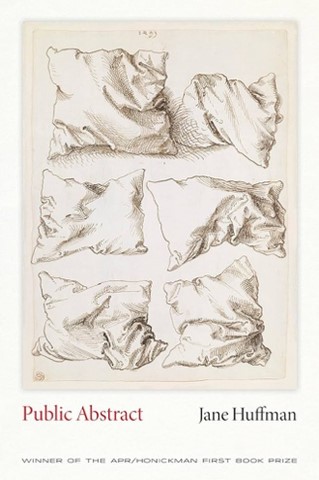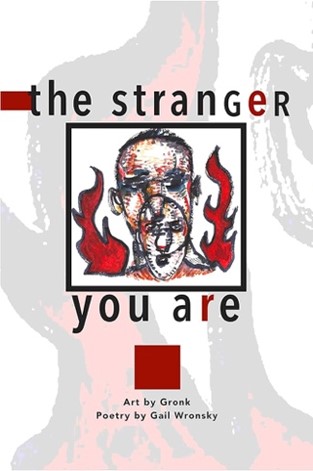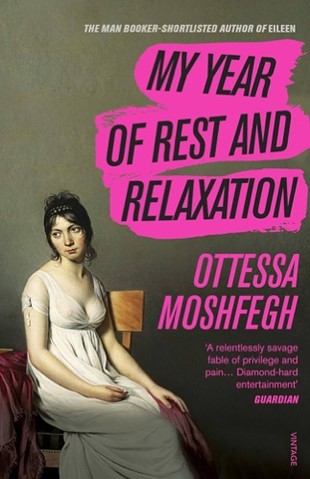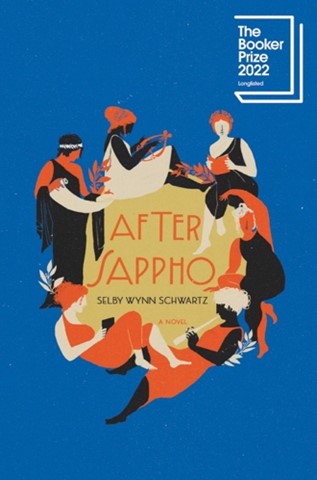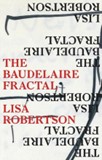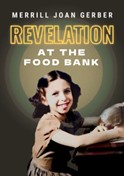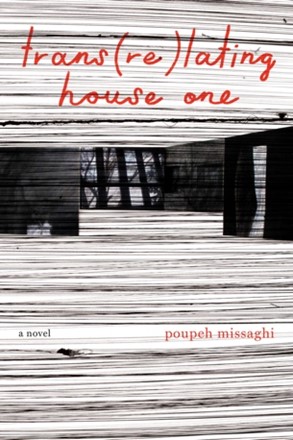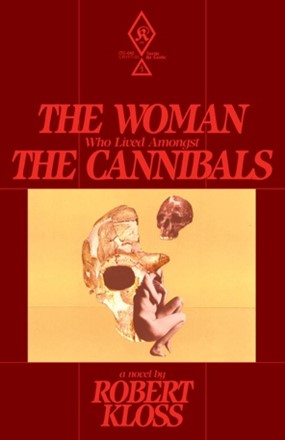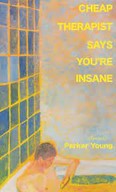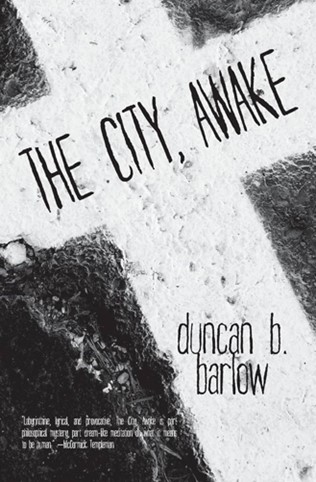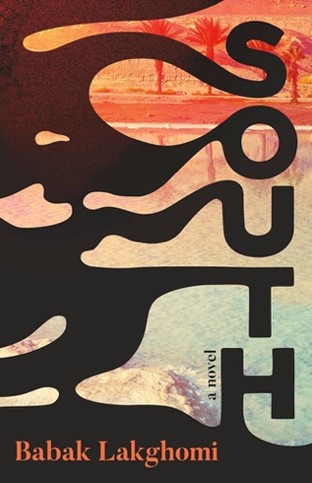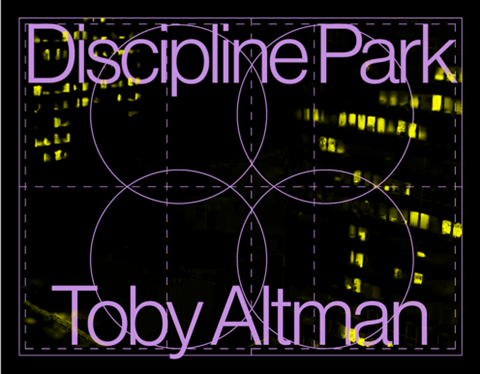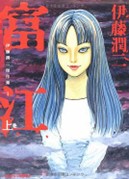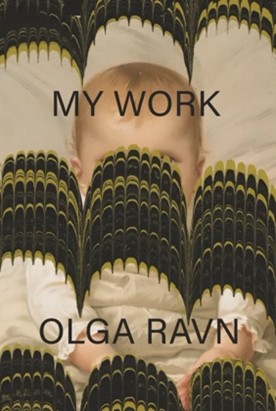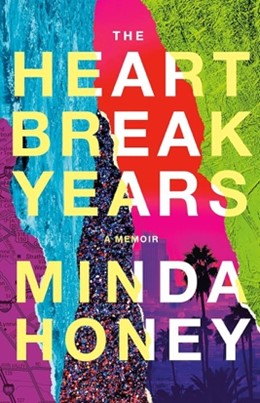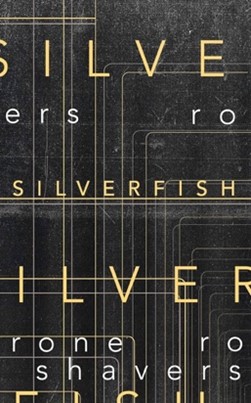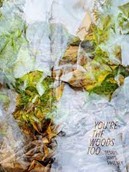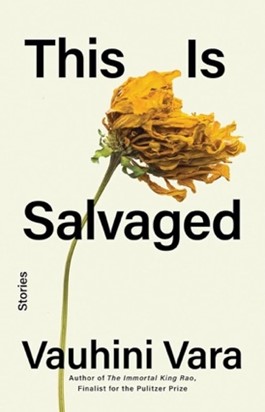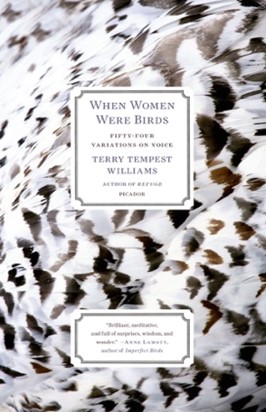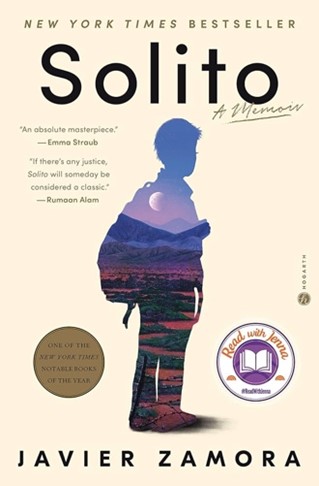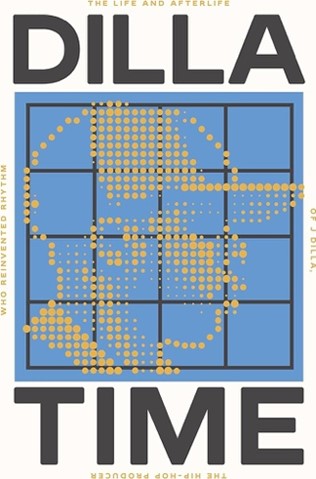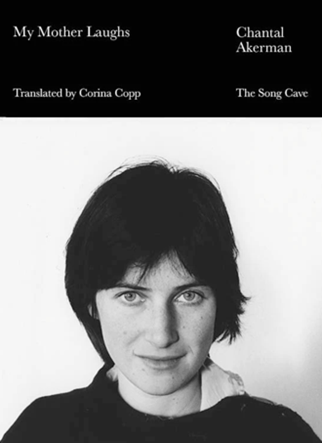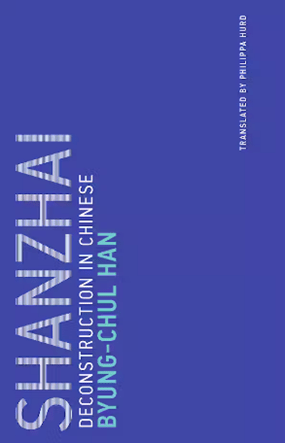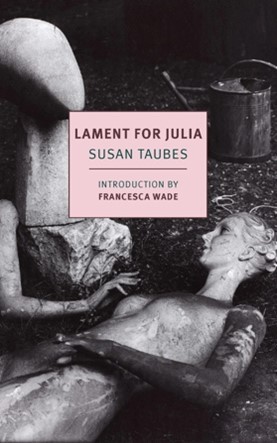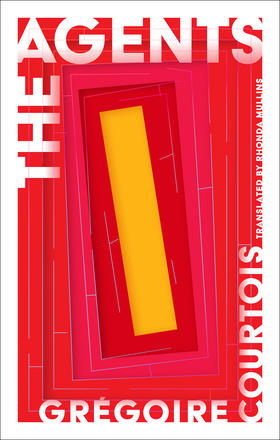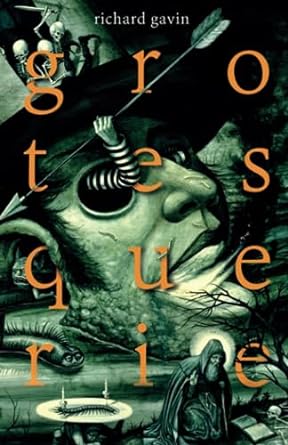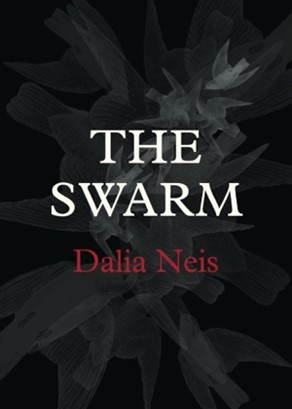It’s almost 2024, another year, and I’m still a sucker for a year-end list. I love seeing what people enjoyed, adding to my TBR, and discovering new titles and authors. However, I also suffer from a very particular, what-some-have-deemed-“weird” taste. Given this affliction, I wanted to create an occasional list of suggestions from authors who share my penchant for more experimental or innovative literature. Below are books that these artists enjoyed in 2023, titles both old and new. I hope you enjoy and add something new to your own TBR. As my sister and I used to say to each other when we were kids, “Cheers to the weirdos!” —Jesi
Public Abstract
by Jane Huffman
(Copper Canyon Press)
I love this book for its commitment to its own aesthetic project, which echoes its spiritual and political projects. The poems are tightly wound, obsessive as a nervous kid on a rocking horse. Their metrical fixation contributes to the air of near-impenetrable privacy, like Dickinson was private—until she wasn’t. I love the book’s commitment to lineage, despite its own confession of the failure in its approach to traditional forms. Its “failures” are actually experimental reconstructions, or deconstructions, of form. There is simply not another book like Public Abstract. It’s a mysterious mutation. A once-in-a-lifetime bloom.
Transitory
by Subhaga Crystal Bacon
(BOA Editions)
To say that Transitory is a sequence of elegies for transgender and gender-nonconforming people murdered in 2020 doesn’t quite sum up the impact and heft of this collection. The book is a testament to selfhood that can’t be crushed and desire that can’t be extinguished, to poetry itself, to the thing in it, and in us, that cannot be destroyed. Each life is rendered on its own terms and via its own aesthetic mode. Bacon’s formal acumen is put to full use, here: villanelle, acrostic, sestina, documentary erasures, and litanies, poems of intimate address which specify and illuminate individual lives via holy details. As I read, the losses that accrue are devastating. In Bacon’s hands, poetry is the grand push-back, a lyric defiance of death.
Stop Lying
by Aaron Smith
(University of Pittsburgh Press)
Smith’s subjects circle the hub of his audacity like carousel horses. He writes about growing up queer in fundamentalist rural West Virginia, about sex and violence, ambivalence and celebrity, loneliness and loss in all their guises. This book’s triggering subject is the death of his mother, his beloved mother, with whom he has a tender, complicated bond. What makes Aaron Smith’s work distinctive is its lack of embellishment, its refusal to indulge in a redemption arc. What William Carlos Williams is to objects, that “No Ideas but in Things” thing (“a red wheelbarrow—” Smith writes in a poem, “fuck off!”), Smith is to unvarnished feelings. His mode of truth-telling is exactly what I need.
Flower Grand First
by Gustavo Hernandez
(Moon Tide Press)
Hernandez has created a beautiful collection of poems of home, poems of love that are not necessarily love poems. The pain is tender; the loss, the “illegal body,” the storytelling, the dreams—all tender. It is a rare, honest tenderness in balance with a tough-as-nails crafting that has given us, in my mind, a perfect book of poems. I can’t help feeling that this is a book that insisted on being written, the lushness of image and music like a tuberose growing up through cracked earth, its stories and personalities eternal as death. “I will just go out and say it. Say / that the eyes of those who are mine / adjust not to an ascent / as much as a return,” Hernandez writes in the final poem. I feel it—the return that is both a death and a homecoming.
The Stranger You Are
by Gronk & Gail Wronsky
(Tia Chucha’s Centro Cultural)
I love the way this book feels in my hands. Although it is a new book, it feels well-worn, like a missive discovered hidden away in a puzzle box under the attic rafters for centuries. What I’m getting at is its capacity to rest in a kind of emptiness, to occupy the territory between living and dying, loving and leaving, or being left. The paintings and the poems exist outside time, or despite time; they resist the very genre they inhabit, refuse to be masterpieces, and therefore rise into icons.
—Diane Seuss, author of frank: sonnets and Modern Poetry
Chinatown
by Thuận
(New Directions)
This novel takes place entirely in the narrator’s head in the form of recollections and daydreams while she is on a train that has been stopped because of a suspicious package that has materialized from we don’t know where. There are four pages, maybe six, where every single sentence contains the number 66. I don’t think any other book so beautifully and seemingly effortlessly encapsulates the brutal project that is longing and loving, and the kind of longing and loving that is absolutely indifferent to any form of requitedness.
3 Summers
by Lisa Robertson
(Coach House Books)
I never know what or how Lisa Robertson does what she does and whenever I read her poems or prose, or again whatever it is, I come out of it feeling like I’ve learned something as immeasurably important as it is impossible to teach, even to myself. In keeping, the line I think about every day since reading 3 Summers (this is not an exaggeration) is “I start a school called how can I live.”
The Prophet: The Life of Leon Trotsky
by Isaac Deutscher
(Verso Books)
“He required his adherents to ‘defend the Soviet Union unconditionally’ despite Stalin, and to assail Stalinism with a vehemence matching his own. Himself never yielding an inch from his principles, he would not tolerate yielding in others. He demanded of his adherents unshakeable conviction, utter indifference to public opinion, unflagging readiness for sacrifice, and a burning faith in the proletarian revolution, whose breath he constantly felt (but they did not). In a word, he expected them to be made of the stuff of which he himself was made.” It’s 1648 pages but I was bereft when it ended.
The Ice Cream Man and Other Stories
by Sam Pink
(Soft Skull Press)
I’ve never read anyone who writes about working in the service industry as convincingly as Sam Pink does. I’ve read a lot of books about being a waiter or being a bartender but having done that myself for nearly decades at this point, every one of those books felt like CliffsNotes, whereas The Ice Cream Man felt like a dissertation. But also the funniest dissertation imaginable:
Not sure what it was, but I already disliked Nicky.
Something about him seemed bad.
He was an asshole, yes, true, but beyond that.
He was an artist of an asshole.
A master.
Someone about whom later assholes would say, ‘He’s the reason I got into being an asshole.’
On the wall he hung a T-shirt with Pac-Man on it, mouth open, going toward a dollar sign.
Let me put it that way.
The Nursery: A Novel
by Szilvia Molnar
(Penguin Random House)
I didn’t think books could be this honest. I’m actually not sure you can be this honest unless a book is fiction. So Molnar taught me that.
—Jared Joseph, author of Danny the Ambulance and A Book about Myself Called Hell
My Year of Rest and Relaxation
by Ottessa Moshfegh
(Penguin)
A perfect, bright, creepy capture of That 21st-Century Feeling in Our Age of Distraction in the form of a young woman shot through with defensive snark, existential anxiety, information sickness, & a deep sense of futurelessness, who decides to pop lots of sleeping pills, SSRIs, & SNRIs, & pass a year in virtual unconsciousness. Acidically funny, fast, forlorn, & full of amazingly turned sentences.
The Nature Book
by Tom Comitta
(Coffee House Press)
One of the strangest reading experiences (in such a good way) I’ve had this year was working through Tom Comitta’s The Nature Book, a relatively seamless collage text of found descriptions of nature with the human (& along with it the essence of normative narrative: conflict) seemingly stripped out, but ever so present in their evident absences. A [[novel]] for the Anthropocene, a narratological problem, that slows & refocuses this oddness called reading while understanding keenly, as Comitta points out in his preface: “there is no nature in this book; it’s all illusion & distortion. Entirely human.”
Biography of X
by Catherine Lacey
(Macmillan)
I’d been hearing about Catherine Lacey’s new novel, Biography of X, since its publication in late March, had been very much looking forward to jumping in, but had no idea how much I would enjoy it when I did. This novel takes the form of a faux biography by a woman who’s dead famous-artist wife she thought she knew, only to discover that the more she researches, the more she realizes how unfathomable her wife really was. Most narrative engines along these lines run like detective novels—i.e., uncertainty & ignorance giving way to revelation. Here, though, it’s opposite: we’ve got a super-smart, sharply written, self-aware anti-teleological problem where the more we learn, the less we know.
After Sappho
by Selby Wynn Schwartz
(Liveright)
A kaleidoscopic narrative tracking the Greek poet’s work as it infuses pansexual feminist thought & aesthetics from the 19th-century through High Modernism, touching along the way the minds of Virginia Woolf, Gertrude Stein, Isadora Ducan, Colette, Vita Sackville-West, & Sarah Bernhardt. After Sappho is extraordinary, energizing, impressively researched, great fun, &, as Schwartz writes in her afterword: “a work of fiction. Or possibly it is such a hybrid of imaginaries & intimate non-fictions, of speculative biographies … as to have no recourse to category at all.”
The Baudelaire Fractal
by Lisa Robertson
(Coach House Books)
Canadian poet Lisa Robertson’s debut novel masquerades as a story about Hazel Brown, a female dandy who wakes one morning to discover she’s written Baudelaire’s oeuvre, but reveals itself to be something else altogether: an extended, plotless contemplation by an incredibly interesting intelligence about French literature, art, museums, archives, architecture, gender performativity, & fashion, all through some magnificent prose.
—Lance Olsen, author of Always Crashing in the Same Car: A Novel after David Bowie
Indeterminate Inflorescense: Lectures on Poetry by Lee Seong-bok
Translated from the Korean by Anton Hur
(Sublunary Editions)
These “lectures” are really aphorisms—470 of them, to be precise, and although they’re for poets, they should be required reading for all writers. Example: “Truth is not where we think it is, but right next to that. To see the truth, which is like the dark side of the moon, embark on a long journey of no return.” This is easily my most dog-eared book of the year.
Dog on Fire
by Terese Svoboda
(University of Nebraska Press)
The mysteries surrounding a troubled man’s death, narrated alternately by his sister and his lover, yield no easy answers in this haunting novel. A modern midwestern classic, suffused with grief and love.
Revelation at the Food Bank
by Merrill Joan Gerber
(Sagging Meniscus Press)
This scrappy, funny, intimate, and sometimes heartbreaking essay collection covers sixty years of a writer’s life and loves. It’s such compelling reading that its profundity sneaks up on you.
Inside the Invisible
by Daniel Simpson
(Nine Mile Press)
Simpson’s deeply perceptive poetry explores blindness, lovers, friends, guide dogs, and the search for the divine. It’s the mix of playfulness and reverence—and the musicality—that make it shine.
A Flash of Darkness: Collected Stories of M.M. de Voe
(Borda Books)
The opening story, narrated by the ghost of a murdered girl who watches her killer prey on another young woman, sets the tone for this harrowingly creepy, fiercely original collection. De Voe’s “flash of darkness ” is more like the concentrated light of a laser slicing beneath the surface of the ordinary.
—Dawn Raffel is the author of six books, most recently Boundless as the Sky
Blue Angel
by Francine Prose
(Harper Perennial)
It’s safe to say that I have now annoyed all my friends and family by constantly telling them to go and read this prophetic novel since I finished it in June this year. Although it was published around 24 years ago, this book is incredibly zeitgeist in its depictions of the nuances of power and power dynamics in regard to identity, specifically between students and teachers. The prose is rich, precise, and wickedly funny. This is also now one of my all- time favorite campus novels, and I’m extremely picky about that list.
Simple Passion and The Young Man
by Annie Ernaux
(Seven Stories Press)
What can I say? It’s Annie Ernaux, writing about sexual désir and littérature. I recommend reading these two short but rich books together; while Simple Passion is a fictionalized account of an affair, The Young Man is nonfiction; the writer is unashamedly writing about her relationship with a student thirty years her junior. It’s particularly refreshing to read this from the point of view of an older woman who has a celebratory and unapologetic approach towards sex and writing.
My Mother: Demonology
by Kathy Acker
(Grove Atlantic)
Something about reading this demonic book makes me feel blessed. Here, Acker’s prose is gorgeously poetic and the narration is artfully chaotic. But I don’t think anyone has ever read Acker for a neat and linear plotline, we read her for the daring voice, the powerful prose, and the unsettling themes. This book is even more of a pleasurable linguistic experience if you also understand Persian, as Acker has written a few Persian/Farsi sentences as well. Her Persian handwriting is simple, childlike, unsure, which has created one of the many compelling contradictions in Acker’s voice and narration in My Mother: Demonology.
—Golnoosh Nour, author of Impure Thoughts
Mooncalves Anthology of Strange Stories
Edited by John WM Thompson
(NO Press)
This is a solid collection of strange, eerie, atmospheric fiction. I should mention that I know about this anthology because I contributed a piece to it, but I do want to champion this anthology as a cohesive arrangement of very good, very odd stories. Some of my favorites include “The Tomato” by Ernest Ògúnyẹmí, “Seldom Place” by J.A.W. McCarthy, and “Night, When Windows Turn to Mirror” by Christi Nogle. They’re some of the best stories I read this year.
The Illiterate
by Agota Kristof
(New Directions)
I loved this little nonfiction book that packs a lot in, telling the story of a complicated writing life in a series of vignettes. A refugee that had to constantly learn “enemy languages” to survive, Kristof writes candidly about how she developed her flat, haunting, fairy-tale-like writing style, which I admired in her novellas.
White Cat, Black Dog
by Kelly Link
(Penguin Random House)
I imagine that many people loved this book this year, and I am no exception. I’m always spellbound by the worlds that Kelly Link builds and appreciate her for filling me with the sense of possibility. I actually listened to this one on audiobook, and it felt right, having these fantastical tales punctuating the in-between spaces for me.
Barefoot Doctor
by Can Xue
Translated by Karen Gernant & Chen Zeping
(Yale University Press)
This year, for a project, I did a fair bit of digging for books that approached wellness and healing practices from an unconventional angle, and Barefoot Doctor has stayed with me (I might also throw in Emmanuel Carrère’s book Yoga here, too). There’s always something very strange and ethereal about the worlds that Can Xue builds, unlike anything else I read. The barefoot doctors in this book have deep relationships with landscape, and the strange events that unfold are so distinctly connected to nature and place that I came out of this spell of a book feeling this lingering nostalgia for not having stayed in one place forever.
Dublinesque
by Enrique Vila-Matas
(New Directions)
Originally published in English in 2010, I read this book as “prep” for traveling to Dublin in 2023, thinking it would be set there, but the book was more a humorous and perceptive meditation on writing, publishing, reading, travel, and all of us becoming “computer nerds” before any character even sets foot in Ireland. As relevant to today as when it was written, this book felt like having a long catch-up with an old literary friend in a cafe before your flight departs, feeling bolstered as a writer and reader in surprising ways, and gladly missing your flight entirely.
—Janalyn Guo, author of Our Colony Beyond the City of Ruins
Trans(re)lating House One
by Poupeh Missaghi
(Coffee House Press)
An in-depth and honest investigation of collective trauma, disappearance, and the erasure of truth in the wake of Iranian 2009 post-election protests. It’s a very insightful and complex exploration of loss, meaning of art making at the face of collective trauma, and the role of language. Its formal inventiveness only matches its precision in capturing the complexities of writing about such difficult topic.
Landscapes
by Christine Lai
(Two Dollar Radio)
A book of quiet beauty about archiving, art criticism, William Turner, loss, and the climate apocalypse. I loved the nuances and many layers of the narrative, the pacing, and Lai’s concise and hypnotic prose.
The Woman Who Lived Amongst the Cannibals
by Robert Kloss
(Inside the Castle)
This is a move toward more of a personal and unique style from Kloss’ earlier works. Kloss manages to bend language while also telling a story that feels well-researched and has a strong sense of place. Each page is made of sentence fragments separated by em dashes in a way that is reminiscent of the poetry of Emily Dickinson. Poetic, incantatory, and visceral, a novel that carefully excavates parts of the dark American history.
Solenoid
by Mircea Cărtărescu
Translated by Sean Cotter
(Deep Vellum)
A novel set in communist era Bucharest that masterfully mixing the domestic and personal with the surreal. Funny, chaotic, strange, and full of wisdom. It is in conversation with other works of literature—Kafka, Borges, and Bruno Schulz come to mind—reading experiences in my early youth that shaped me as a reader and writer. So, it was a treat to spend time with this long book.
Cheap Therapist Says You’re Insane
by Parker Young
(Future Tense Books)
A book of very short voice-driven stories with unexpected turns and twists. I loved the humor and tenderness here, and how the stories blur the lines between real and surreal. I am very excited to read whatever Young writes next!
—Babak Lakghomi, author of South
The Employees
by Olga Ravn
(New Directions)
A mind-bending trip through space that shows the humanoids may be more human than humans are. But the real reason to take this voyage is for Ravn’s lyrical, elliptical prose.
The City, Awake
by duncan b. barlow
(Stalking Horse Press)
The mystery in this book isn’t so much whodunnit, or how was it done, but what’s the meaning behind doing anything? For those who like their characters to not only speak out of both sides of their mouths, but to also find other sides to speak out of, it’s time to immerse yourself in this glorious darkness.
South
by Babak Lakghomi
(Dundrun Press)
Lakghomi’s master stroke is combining Orwell’s realistic horrors (the state’s exercise of power) and Kafka’s surreal confusion (how could this be going on?). In a novel that’s rather short and often written in a straightforward style, Lakghomi has included so many layers in South, the effect is hallucinatory, a sublime trip, one full of terror (as always with the sublime) and wonder.
Don Quixote, Pt. 2
by Miguel de Cervantes
At one point, Don Quixote walks into a publishing company where they are printing copies of the second part of Don Quixote. The Knight of the Sad Countenance points out they’ve gotten everything wrong. Part One is grand, but I absolutely adore Part Two.
—Andrew Farkas is the author of The Great Indoorsman: Essays, The Big Red Herring, Sunsphere, and Self-Titled Debut
Macunaíma: The Hero with no Character
by Mário de Andrade
Translated from Portuguese by Katrina Dodson
(New Directions)
A shape-shifting, race-shifting trickster, rolling heads that chase him across state lines, amulets, mythical creatures, constellations, a kaleidoscope of folklore and language: this 1928 novel by Mario de Andrade is a true weirdo, in the best sense of the word. It was wonderful to revisit it this year, for the first time in English, through Katrina Dodson’s beautiful translation.
Hemorrhaging Want & Water
by Emily Marie Passos Duffy
(Perennial Press)
The tagline for this beautiful poetry collection is “pastoral city smut for bad girls with big hearts,” and it lives up to that, and so much more. It is about the intimacy and estrangement of cities at night and about labor on the fringes (sex work). It has this delightful, strange erotic charge toward cities. I love the weirdness of all of that together.
Bird / Diz [an erased history of bebop]
by Warren C. Longmire
(Bunny Presse)
This was a fantastic recent discovery to me. It is an exploration of the lives and work of Charlie Parker and Dizzy Gillespie through experimentation with form, erasure, inclusion, exclusion, chorus. I love how the book moves between very visual poetry, erasure, and essay, creating a masterful amalgamation. it includes QR codes linking to archival footage of the artist performing and it comments on the ephemeral nature of these links. I love its interaction with history as well as the media, which records that history so partially.
Discipline Park
by Toby Altman
(Wendy’s Subway)
Architecture in general, and brutalism in particular, have always been my thing, and it has been even more present in my mind in the past year (as I completed edits on my upcoming fiction debut, including some architecture, and begun working on a novel with a space-time-portal locked in mid-century brutalist architecture). So I was very excited when writer Martin Seay recommended this book. It is a marvel, making use of diagrams, photographs, typographical and graphical adventures. I loved the rich take on this type of architecture and seeing what was new or different for me as well as finding some of my fascinations in there (e.g., how this architecture interacts with the idea of the future: “I thought the future would bring a palace of succulence and denial. Cold cuts and lemonade. A perishing retail center. Instead, it promises gradual release. Into a brightly lit institutional space”).
As I Said: A Dissent
by Abby Minor
(Ricochet Editions)
A moving, complex, and fresh approach to the discourse around abortion, done through an examination of nineteenth-century abortion provider Madame Restell (Ann Lohman). At first, I couldn’t put my finger on why I found it so unexpected. It is fascinating how it is able to situate abortion in connection with lineage, family, history, documentation, citizenship. But there is more to it. Then I read this interview with the author that illuminated the weirdness to me, in a wonderful way. “I struggled within several traditions, not only that of lyric poetry but also the newer tradition of abortion storytelling; in the one you’re not supposed to argue or explain, and in the other you’re sort of supposed to plead your case. I didn’t want to plead my case, and I was full of explanation and argument.” That struggle generated something new and wonderful.
—Ananda Lima, author of Craft: Stories I Wrote for the Devil and Mother/land
Currently my daughters made me read the Japanese comic book Tomei. This girl is killed and then regrows inside the bodies of other girls. It’s horrific and incredible.
But overall, for me this year was an Amelia Rosselli year. Spent a lot of time with the many translations of the brilliant, daring Italian poet’s work—by Lucia Re, Jennifer Scappettone, Gian Maria Annovi, Diana Thow, Deborah Woodard, Paul Vangelisti and Cristina Viti. The poetry is lyrical, politically charged and turbulent in a way that completely chucks the old US distinction of “raw vs cooked”—it has an enormous, spontaneous energy and movement but is also undeniably thought-through at a molecular level, never cooked or dull. When I read her poems, my synapses begin to pop and instantly make my own poems. Highly recommended. This year also saw the publication of an edition of her English poems (She lived in US for several years in her youth). I recommend all of them. It’s an unusual pleasure to have so many versions of the same texts—often very different versions. Read them all.
This was definitely the year of a lot of goth—even filthy—writing by Latin America women writers. The first that comes to mind is Jawbone by Monica Ojeda (Coffee House), which one foot in Genet and one foot in pulp crime fiction, and both feet in the grave. These books delve into the violence and power dynamics of this world without the usual censorious standardization of US mainstream publishing, and importantly without the urge for redemption (see Leo Bersani) that causes a lot of US writing to come up short. Cheers to maximalism.
I’ve long been a fan of Olga Ravn’s poetry, going back to her brilliant first collection, the gurlesque I Eat Myself Like Heather: Girl Mind, but lately she’s published a couple of great fiction books—The Employees and My Work (New Directions) (though these books are really part poetry as well, hybrids on a fundamental level). Ravn is one of the founders of “the Witch School” of Scandinavian poetry, which is invested in the voice of young women and children, and she’s largely responsible for the renewed interest in Tove Ditlevsen’s work. She is an author everyone should read and pay attention to.
I have also been translating work by Ann Jäderlund, Jenny Tunedal, Eva Kristina Olsson, and Aase Berg this year. I mention these translations because the work I spend the most time/depth with are the works I translate. And vice versa. I get caught in a book and start to translate it. The Berg book—Aase’s Death —is coming out next year in English with Black Ocean; the Jäderlund—Lonespeech—is coming out with Nightboat. The others I haven’t finished yet. I am particularly drawn to the way Olsson’s work is always bifurcating across media: a performance piece becomes a poem that contains photographs of the performance, which is really about a dress, and which then gets a sequel that may be a translation of Medea. A restless, anachronistic, tactile energy continually metamorphizes across media, genre language.
I also spent a lot of time on Action Books. If I had to pick one book from the incredible lineup this year it would be Zakwato, an epic poem by Azo Vauguy from Ivory Coast (translated by Todd Fredson). Zakwato is supposed to guard his village, but falls asleep. When the village is plundered, he decides to have his eyelids removed so that he will never sleep again. Mythic quest ensues. Love the way this book stands on the intersection of an oral culture—the author gives shout-outs to the heroes of that culture as if to bring them into print to be remembered—and print culture, ritual literature and modernism. African poetry is seldom published in translation, but here’s a great example of what such a translation might be. Comes out of Fredson’s deep engagement with the culture, politics and people of Ivory Coast. Heroic translation work.
Other presses that have been publishing a lot of great work in translation include World Poetry Books, Co Im Press, and Cardboard House. At the recent ALTA conference in Tucson, Kate Hedeen and Steve Halle organized a great mass reading of translators reading their translation, “The Shithouse Countries of the World Unite” Reading. It was maybe my favorite “reading” of the year. Inspiring to be brought into this space with all these disparate, powerful voices. It was an incredible anthology.
—Johannes Göransson, author, translator, and publisher of Action Books
The Heartbreak Years
by Minda Honey
(Little A)
I read this generous memoir while traveling and was so immersed that I barely noticed my plane’s delay. Instead, I was riveted by Honey’s chronicles of an era she depicts with beauty, pathos, humor, and insight. Her voice is so compelling—she’s simply a writer you want to spend more time with—and I loved these vulnerable, vivid stories from her life.
Summertime in the Emergency Room
by David Nutt
(Calamari Press)
This collection of stories knocked me sideways. David Nutt is the kind of writer I pick up, read, and think almost on a line-by-line basis, “Oh, yeah. That’s how it’s done.”
Silverfish
by Rone Shavers
(Clash Books)
This experimental futuristic novel set in a fully corporatized America raises timely questions about language and history. I read it in one sitting and will long continue to think about it. It’s brilliant, propulsive, and original.
West: A Translation
by Paisley Rekdal
(Copper Canyon Press)
This acclaimed hybrid poetry collection utilizes historical documents, videos, images, and sound to explore the complicated history of the transcontinental railroad and the Chinese Exclusion Act. It’s a necessary read and unlike anything I’ve experienced before.
Once a City Said: A Louisville Poets Anthology
Edited by Joy Priest
(Sarabande Books)
Poet Joy Priest edited this collection of writers from Louisville, KY who explore the town’s deep complexities in the aftermath of city-wide protests following Breonna Taylor’s murder in 2020. The diversity of voices—among them, poets like Lance G. Newman II, Mackenzie Berry, and Erin Keane—make this a resonant, affecting anthology.
—Ashley Marie Farmer, author of Dear Damage
Sexual Stealing
by Wendy Walker
(Temporary Culture)
Daniel Levin Becker’s foreword to this sui generis volume urges us to approach it as a novel, a movie, song cycle, an ancient home or monument, or finally as an insurgency. But it could also be approached as a polymath’s library, a brilliantly curated historical museum exhibit, or as an idiosyncratic inventor’s laboratory. Walker conjoins a gnomic, beautifully evocative poetic text (which we learn in an appendix was created by selecting one word from every line in sequence from Anne Radcliffe’s The Mysteries of Udolfo) with illustrations and textual excerpts that shed light on the roots of the Gothic novel in what Walker calls “sexual stealing”: “the illegal appropriation of a highly libidinized object” by the powerful. The texts chosen are themselves fascinating and often disturbing, many of them drawn from historical records of Jamaican slavery; the two appendices and notes offer explanatory context that relieves our curiosity about the form of the Walker’s construction without dispelling the vital gaps of silence between the laterally related yet independent objects within it. It is hard to know what is most admirable here: the deeply serious ethical reflectiveness behind the work, Walker’s intense aesthetic sensibility, or the literary invention which reveals the possibility of new forms of expression. Henry Wessell’s Temporary Culture has also here produced one the most beautifully designed paperbacks I have ever seen.
Speculations
by Alfred Jarry
Translated R.J. Dent
(Black Scat Books)
Calling all pataphysicians and Ubuists! Did you know Alfred Jarry was for a time a froggy proto-Myles na Gopaleen, writing a column of “absurdist speculative essays” for the magazine La Revue Blanche between 1901 and 1904? Jarry’s satire and natural kinship with the bizarre are here as lively as ever, and if anything darker. Allusions in this text to then-contemporary events and other topical matters led me at times into a certain touristic mystification, too ticklingly pleasant for me to seek to dispel through explanation. Jarry’s writing is pure charm; the translation is very convincing, and the publication as a whole expresses also the delightfully bubbly spiritual lightness of Black Scat Books, whose work in general deserves more attention. I was also pleased to find that these essays strongly reminded me of Thomas Walton’s equally delicious “Unsavory Thoughts” series for the journal I publish, Exacting Clam.
War Music: An Account of Homer’s Iliad
by Christopher Logue
(Farrar, Straus and Giroux)
I came across Logue’s magnum opus this year during the controversies surrounding Emily Watson’s Homer translations, all sides of which wearied me: translations may be merely erroneous, or erroneous and inspired; there are no other possibilities. Logue’s War Music sidesteps this dichotomy by locating itself just outside of the realm of translation, in his own suburb or colony of it. The liberties he takes are, in comparison with Watson’s, enormous. His is frankly a new poem, which like a binary star has two centers: Homer’s original and Logue’s answering originality, which gives the epic a new sense of sweep as well as introducing many startling brilliancies along the way. It is as if Logue comes touchingly alive in his love of Homer, and vice versa, and we stand with them in their dialogue, turning our heads back and forth with wonder.
Morton Feldman: Friendship and Mourning in the New York Avant-Garde
by Ryan Dohoney
(Bloomsbury)
An academic work by a musicologist about a modernist American composer may seem unlikely in this list, but it should be of deep interest to anyone concerned about how intimately, profoundly and consequentially artistic work depends on artistic community. Dohoney delves into the human relationships that fueled the creativity of Feldman and the writers and artists in his circle, including John Cage, Philip Guston, and Frank O’Hara, how those relationships were essential for creating a context in which each individual could discover and establish their own style and approach, and how the work remained deeply involved in those friendships even after they were ended by death or estrangement.
Woman Pissing
by Elizabeth Cooperman
(University of Nebraska Press)
The back cover says that this book, named after a Picasso painting, “celebrates artists—particularly twentieth-century women artists—who have struggled with debilitating self-doubt and uncertainty.” Yet its most conspicuous aspect is the extraordinary confidence of its style, embracing bricolage, fracture, detour, indirection, and performatively exuberant brief sentences redolent with unstated implication, like the perfect and unhesitant space-defining lines of a Picasso drawing. It’s a high-voltage style, comic, serious, probing and provocative, a style that you feel has the presence of a real person at the far end of it, with the working end often equipped with an enjoyably dangerous sharp. Woman Pissing offers, among other pleasures, a foraging sustenance like that of reading the great journal-writers (Thoreau, Boswell …): constant real-time discovery, a steady stream of cathartic literary explosions of wit and inwit. But unlike a journal, which must follow its own tail to get lost, obeying linear order to finally meander away from it, it cuts to the chase, shows us only surviving crystalline moments—its atoms are apothegmatic, artfully arranged into thematic panels situated around us, creating a space which affirms our considerable dispositive agency as readers. As in Wendy Walker’s Sexual Stealing, form here is the environmental arrangement of mental obstacles, like the bumpers of a pinball machine through which we travel, and getting somewhere in it is our own delightfully tactile business.
—Jacob Smullyan, Publisher, Sagging Meniscus & Exacting Clam
Mountain Amnesia
by Gale Marie Thompson
(Colorado State University Center for Literary Publishing)
Thompson is a master of the lyric. Reading these poems is like catching up with an old, good friend. Resonances of the epiphanic are sensed before they are said and echo through your other senses long thereafter. The language is rich, eclectic, and reflexive in the best ways, mining and weaving together the personal, worldly, and pop cultural into fresh spins on the triumph of pain and the painful triumph of art over pain. Thompsons shows you the crevasses of the wound, yes, but reminds you that, for better or worse, they are the result of major seismic shifts—sites in waiting to be excavated, repopulated, and renewed.
You’re the Woods Too
by Dennis James Sweeney
(Essay Press)
A hybrid poetry-essay that uses only the best of both genres to its advantage. Travel odysseys into the woods meet personal journals meet microscopic aphorism-odes on moss meet elongated philosophical Whitman-isms. Unlike many eco-centric works, Sweeney’s is unwilling to sacrifice its poetic thrust for laborious encyclopedic asides on the nonhuman world and/or esoteric diatribes toward vague allegories toward “sustainability.” What you get is a much more urgent: a haunted tour into the real liminal space of the unreal human-nature binary.
Valley of the Many-Colored Grasses
by Ronald Johnson
(The Song Cave)
A reissue of an early poetic work by Ronald Johnson, published originally in 1969. Despite his tireless pioneering in the realms of experimental, concrete, and erasure poetry—and having authored arguably one of the greatest long poems in the English language—Johnson is rarely given his full due. Valley of the Many-Colored Grasses is a timely reminder that his contribution to eco-poetics, too, is equally important. I am forever in awe of Johnson’s acute ear and eye, his unique brand of lexiconic sculpturing allowing for his peering into worlds in worlds in worlds in worlds.
The Equestrian Turtle
by César Moro
Translated by Marco Rivera
(Oyster Moon Press)
The only volume of poetry to be authored by Moro in his native Spanish, rather than his adopted French. Long overlooked, Moro stands out amongst other modern-era Surrealist poets for his open queer identity and tireless transnationalism (he fostered Surrealist movements in at least three countries: Peru, France, and Mexico). Translator Marco Rivera wrangles Moro’s wild, iconoclastic, sensual, and waylaid tribute to queer love and the marvelous into English in a spartan but still informative edition.
—Jake Syersak, author of Mantic Compost
I Would Meet You Anywhere
by Susan Kiyo Ito
(Ohio State University Press)
Susan Kiyo Ito’s memoir is a wise, poignant, searching journey about home, self, and identity stemming from her search for her birth parents. However, I Would Meet You Anywhere becomes more than just a search; it is a moving book about the meaning of family and the desire to own and tell one’s story.
This Is Salvaged
by Vauhini Vara
(W.W. Norton)
I was looking forward to Vauhini Vara’s story collection because a) I love short stories, b) I’d loved her essay about her sister who died. The best short stories make me stop and think and make me think of other stories and make me want the story to last longer to stay in that bright world a little longer. There’s also a fearlessness in some of these stories. Here’s the first line of the first story: “For a month afterward, our whole house smelled foul.” Vara will keep you reading and you’ll be glad you did.
Hole Studies
by Hilary Plum
(Fonograf Editions)
Instead of back cover copy summarizing this strange and brilliant essay collection, the back of the book quotes Sinead O’Connor: “‘I’ve actually lived for nearly 26 years and so […] even if I hadn’t read a book, which I have, you’d have to be fairly stupid, wouldn’t you, not to notice.’ Interviewer: ‘Not to notice what?’ O’Connor: ‘That it’s all bullshit.’” Hole Studies is a wildly original book about attention, labor, writing, art, and carework. Plum asks questions about care that kept me thinking long after I finished reading. These essays are just tremendous and cover a lot of ground: cultural, political, and personal.
When Women Were Birds: Fifty-Four Variations on Voice
by Terry Tempest Williams
(Macmillan)
My friend Geeta send me When Women Were Birds after my father died this summer. It took me a few months before I had the headspace to read it, but then it delivered so much more than I ever expected. Williams describes the natural world and her place in it and explores grief, time, her mother’s death, marriage, politics, and the relationship of art to wilderness and activism. In a time of despair, When Women Were Birds was a refuge and comfort to read; a map to follow, a river to step into.
They Called Us Exceptional: And Other Lies That Raised Us
by Prachi Gupta
(Penguin Random House)
My South Asian group chat of writers read this book first and insisted I read it, too. I couldn’t put it down (except I had to take breaks, because it’s intense), but Gupta’s memoir about her family and trauma, their ideas of success and her exploration of patriarchy, capitalism, Asian American immigration, assimilation, and estrangement, broke so many different ideas I had about what a book, an American book at that, published by one of the big four, could actually be about. It’s an astonishing memoir. A must read.
—Sejal Shah, author of the forthcoming debut story collection, How to Make Your Mother Cry
I don’t want to say these were the best books I read this year. I’m not sure I can handle the aloneness that best suggests. These are a few of the books that moved me this year (and there are so many others I could have written about, like just last night I finished the new Zadie Smith The Fraud which was such a brilliant juggling feat!)
Caveat number two is that for the most part I am a bound by the algorithm of what becomes available on my library list—my kindle is fueled by Libby and Libby by casual wants from the last several years. There’s a lot to say about why someone may rely on libraries as opposed to the ideal of purchasing books from the small, important presses that publishes one’s own work but I just can’t be the one to say it. Or not in so few words:
The Snow Child
by Eowyn Ivey
(Hachette)
I loved the sensational quality of reading this book, not the fantastical that constructs the mystery, but the sensations of Alaska that’s one of the main characters of the book—the harsh environs that Mabel and Jack forge a life in. Nature as a giant icy blundering careless oaf. I read it just as the spring was breaking here in Philadelphia and was elsewhere for days. (I had a friend who read Michner’s Alaska about a decade ago. I remember feeling like he was separated from me by the landscape of the text he was immersed in. And a similar feeling when my older sister read Shogun when we were kids. So many weeks of her being over there. Away from me.) But, yes, I also loved the fantastical in The Snow Child and the way the realism moved into the magical and back into the realist reminded me of another astounding book, The Sell Out which handled its flights of fancy with an equally cool nonchalance: “Shit may or may not be ‘real’ don’t trip.” Also, the character of Esther!
Solito
by Javier Zamora
(Penguin Random House)
I don’t usually love memoirs. Too icky, too interested, but Solito, the account of a young boy heading alone from El Salvador to the US is astonishing. The narration is astounding—it felt more like a novel than a memoir because this perspective felt so present (and the dialog and descriptions unquestioned.) Zamora’s writing is strangely modernist/formalist—perhaps in the way a 9-year-old might speak? The voyage is harrowing but the writing is never maudlin. There is no tedious psychological read of the adult superimposed upon the child’s experience. You are with him and you are a child, terrified, lonely, having a little fun, eating new foods, tired, dirty, embarrassed. It’s not because there are 300 million migrants searching for a safe home on our planet that Solito was such a powerful read, but it would be impossible not to think about them. Searching. I’m reminded of Exit West by Mohsin Hamid, a wild genre fuckaroo from several years ago. An entirely different literary approach to migration but connected, for me, by both being texts about a hugely important contemporary social issue so steeped in sorrow, deprivation, colonialism and tragedy and yet, somehow, working as pieces of art almost despite the import. Both of these books also echoed The Treeline by Ben Rawlence, which is essentially the story of flora migrating to the north as humans continue to make life inhabitable for all creatures great and small. Fast and slow migrations.
Ducks, Newburyport
by Lucy Ellmann
(Biblioasis)
I started reading this strange fat book upon the recommendation of my friend Meredith Root who is a real reader and has exquisite taste. After about 200 pages I put it down—the repetition and domesticity feeling like too much labor for so little payoff—the remaining 800 pages a daunting prospect. I switched from reading to listening to see if I could bear it with a bit of physical distraction. Cleaning, painting, building shelves. Somewhere around the halfway mark the book’s maddening repetition became compelling, hid all sorts of seismic happenings and touched on so many profound and quotidian concerns. I turned back to the Kindle book and finished up the last five hundred pages by reading. Reading Listening Reading. A new experience for me. But the book is strange enough, an Agnes Martin painting or serial symphony without me needing to jazz it up with a platform switch. Also, unexpectedly through all its tedious discipline the story became downright soap opera-y despite its seeming minimalism. A lot happens! It is dramatic! It occurred to me that I had not read such an experimental, formal handling of domestic affairs before. Which reminded me of something that Claire Louise Bennett wrote about the writer Ann Quinn. Bennett wrote something about how the experimental, modernist is—what? I can’t really remember, at odds with the blue collar that Quin was or wrote from. A really nuanced thought in a book of nuanced thoughts caaallled:
Checkout 19
by Claire Louise Bennett
(Penguin Random House)
Which will be my fourth choice though I also wanted to comment on the intermittent cats story that runs through the Ellmann. Whenever the cats tale again picked up I was thankful for the palate cleanser and the widening of the landscape.
Bennet’s writing and rhythm and deft slips between memoir, narrative, and what?—book report? was so pitch perfect, her voice is arch, arch, arch, and delightful. I just loved reading the musings of a woman so immersed in writing, her own and others, so inside her love of and devotion to language. (Bit of a spoiler coming) at one point she (ish)(CLB or a character???)(maybe unclear or maybe I’ve forgotten) is essentially raped and the telling of this happening is truly astounding and her later distress at the loss of a story (is it lost or destroyed? I can’t remember) her distress over this missing writing is much more acute than the rape. I got in a bit of a kerfuffle with a friend who had read this a bit before I had and who was thoroughly turned off by the handling of these “two catastrophes.” I really appreciated this handling and recognized the importance of representing a woman who might be more invested in her writing than her body (or, what’s the difference?) Not for any reason other than I love when unpopular possible ways of being are represented.
Dilla Time
by Dan Charnas
Dilla Time was such a clear and thorough biography of James Dewitt Yancey, hip hop, the new technology of synthesizers, and Detroit. The ways that culture, style, technology, and social mores are represented as tentacular—building upon, replacing, altering, and devolving each other in a continuous entwinement and system of pressures. (I kept thinking of Manuel DeLanda’s book A Thousand Years of Nonlinear History and Donna Haraway’s Staying with the Trouble. Everything pressing upon everything to continuously form and deform.) And though James Yancey (JD, J Dilla) is absolutely the hero of this biography and held as a singularly gifted, focused, and rigorous creator, the wide reach of Charnas’ research put this astounding work into a grid of human endeavors—Barry Gordy, Robert Moog, Roger Linn, Q-Tip, D’Angelo, Common (poor brilliant Erykah Badu the sole woman in this cast of brilliants yet still prey to the silent internal click track of casual, persistent misogyny)—all these artists working towards and away from each other in thrilling, profound ways.
—Stephanie Barber, artist and author of Night Moves, Trial in the Woods, and these here separated …
The Amber in Ambrose
by Jon Woodward
(Trnsfr Books)
Any new Jon Woodward publication is a big event in my world, and this one is a very welcome addition to his oeuvre. I don’t know of any other living poet who’s as inventive and creatively restless. His poems are like little puzzles, but the puzzles care very much about the humans that read them.
I Love Shopping
by Lauren Cook
(glo worm press)
This book is perfectly chaotic. One of my favorite passages, which I think about all the time: On New Years Eve of 2014-2015 I saw Lindsay Lohan in Chinatown. It was a good year. She was in a black SUV and I was on the sidewalk and she had her window rolled down. On New Years Eve of 2016-2017 I saw a racoon eating persimmons out of a tree in someone’s backyard. Both of these things feel the same to me and mean the same thing.
What Money Can’t Buy
by Michael Sandel
(Farrar, Straus and Giroux)
It’s hard for me to think of something to say about a book that’s so much smarter than me. It was good. There was a whole section about standing in line and the economy America has created to avoid standing in line, like priority seating and fast passes at amusement parks.
Sad Sad Boy
by Michael O’Brien
(Back Patio Press)
These stories are so barely stories it felt like it was really pushing the boundaries of what literature could be. I scoffed at first, but I finished the book impressed. I don’t know how he did it.
it got so dark
by Benjamin Krusling
(Ugly Duckling Presse)
I just heard Benjamin’s poems for the first time a couple days ago at the Salon Salvage reading series in Troy, NY. I was blown away—his poems are so touching and perceptive and intelligent. I bought this chapbook and read it immediately, and I’m looking forward to reading his book Glaring tonight after I finish typing this.
—Andrew Weatherhead, author of Fudge
Lament for Julia
by Susan Taube
(NYRB)
This novel, nominally a speculative autofiction, turns the concept on its head: the detached omniscient voice overseeing this project, part super-ego and part god, is an unwitting, sorrowful instrument with a dull toolkit. It’s good at begetting a corpse: Julia’s.
My Mother Laughs
by Chantal Ackerman
(The Song Cave)
I read this as I re-watched No Home Movie. No other book has gotten with such offhand directness the achronological repetitive stasis that is everyday life as embedded in a memory system. A human being has a cadence. Astonishing. An exquisite translation by Corrina Copp. I read it twice, and the second reading felt simultaneous with the first.
Impossible Dreams
by Pati Hill
(Printed Matter)
Pati Hill received a Xerox machine in 1973 and proceeded to make a series of photocopies of the grainy, half-remembered objects of domestic life. Here, the home-made documentary impulse is married to text. Images by photographers are revisited as xeroxes, incomplete parts of a larger memory work. Ambiguity is a problem when the mind tries to reproduce it. No, ambiguity is a problem when the mind tries to solve it. Published by Alice James Books in 1976. Needs to be reprinted, along with Dreams, Objects, Moments, and I Decide to Wrap Up My Family (Je decide demballer ma famille).
Shanzhai
by Byung-Chul Han
Translated by Philippa Hurd
(MIT Press)
An inquiry into shanzhai, which propels countless counterfeit Prada and Gucci bags but also underlies traditional Chinese painting. Unlike painting in the West, Chinese painting manifested liquid atmospheric conditions: as substance, paint was utilized to dissolve terra firma into infinite distance, mist, or the blurred outlines of clouds, much like the song of a nightingale or moonlight were thought to. A brief philosophical inquiry into copying, emptiness and flatness that is not rooted in western philosophy.
Pure Colour
by Sheila Heti
(Macmillan)
I keep coming back to this and re-read it twice this year. The orientation, the way things are looked at, as if contemporary life had been inverted inside a fairy tale, feels so improvised, so free, so full of oscillations of color in a room, i.e. the feelings.
—Tan Lin, author of over 13 books including Our Feelings Were Made by Hand (forthcoming)
Paradise Rot
by Jenny Hval
Translated by Mariam Idriss
(Verso Books)
A terrific short novel. Propulsively creepy. With a thereminist’s sensibility, Jenny Hval’s prose escalates and defuses in exquisite bouts of tension.
Math Class
by Kelly Krumrie
(Calamari Press)
Kelly Krumrie’s Math Class gave me a new appreciation for lines across landscapes. Sentence by sentence, Math Class brokers the marvelous abstract with intensity and expansion.
Separation Anxiety
by Janice Lee
(Clash Books)
Janice Lee’s Separation Anxiety felt preparatory—a book that grew my capacity to weather future griefs. By turns profoundly direct and wisely-musing, these poems became welcome companions.
Nina Simone’s Gum
by Warren Ellis
(Faber & Faber)
Nina Simone’s Gum made me prioritize joy again: in writing, in collaboration, in ritual, in relics, and in artistic experiments. Warren Ellis is the patron saint of art pirates.
—Vincent James, author of Acacia, a Book of Wonders
Swedish Cults
by Anders Fager
(Valancourt Books)
In 2023 I started paying closer attention to international horror, more than the occasional or devout author following here or there, but especially international horror from independent presses. Valancourt is a heavyweight in this regard, coming so late to the knowledge of their World Horror Stories anthologies that they already had multiple single-author titles published for me to sink my teeth into. Attila Veres and Bernardo Esquincia both brought new storytelling perspectives and poise to my shelf, shades of David Lynch and Borges-in-miniature, respectively. I’m also currently in progress with Luigi Musolino’s A Different Darkness on my Kindle. I’ve chowed down on three books by Stephen Gregory. But hands down my favorite Valancourt book that imprinted on me the most was Swedish Cults.
If Midsommar didn’t cut it for you either, here are five explosive horrors about cults from “Swedish Lovecraft on acid” author Anders Fager, the nervy prose of which is a mounting breath so hip it reads like Fall lyrics. It’s interesting to apprise something so stylized and headstrong from a game designer, whose writing, I would think, has to appeal to mainstream audiences for that format. I hope there are more books braising in his oven, because this one, written in 2009 and appearing in English for the first time, scored mighty high on my literature report. Swedish Cults pulls no punches in a hard mythos culled from both familiar and unfamiliar sources; I thoroughly enjoyed the intoxicating rhythms of this 2022 translation by Ian Lemke and Henning Koch. Even the (linked?) fragments bridging the longer stories were great fun and made the text feel cosmic in scale. Denizens of Carcosa won’t be disappointed.
The Agents
by Grégoire Courtois
(Coach House Books)
Coach House Books is a well-known and adventurous press among the rank and file of my literary friends, but returning to an author I had previously indulged in is a great moment from 2023 to reflect on. Enter The Agents by Grégoire Courtois. Courtois’ voice in translation by Rhonda Mullins has been so bold I’d follow them anywhere, so this follow up from The Laws of the Skies author about agents in separatist guilds making sense of a world ruled by automated work quickly inserted itself into my reading. It’s an oddly compelling satire, partly told through company memos and guild chatrooms, that’s sometimes rickety in action and never as bloody as promised in concept, but a helluva good shot to the brain. Think High-Rise meets Seinfeld, by way of The Matrix. Let’s hope Courtois’ 2017 novel about a talking car returned after its owner’s disappearance doesn’t stay in a holding pattern too much longer …
grotesquerie
by Richard Gavin
(Undertow Publications)
Also new to me was the Undertow Publications catalog, which I rifled through in pursuit of more gems. They boast titles from Simon Strantzas and Laura Mauro which are in my TBR, but I was able to dig into grotesquerie by Richard Gavin before year’s end. This is macabre fiction that lingers in your grey matter: couples pursued by revenant father-in-laws, tourists assimilated by dark matter, empaths nailed to trees; confident, gamey morsels oozing-Weird with unsettling imagery. There’s a classic feel to these stories, in that very little technology interferes and a lot of them sip well like a good bourbon going down, but don’t take my word for it; Thomas Ligotti heaps on the advance praise: “Gavin’s writing serves as a testament that great masters once crafted great stories … and as evidence that they shall do so again.”
—Jason Teal, author of We Were Called Specimens
The work of Peter Weiss
2023 is the year I discovered German/Swedish playwright Peter Weiss. If nothing else this year, what a treasure it has been to find his work. I have to highlight his most famous work, The Persecution of Assassination of Jean-Paul Marat as Performed by the Inmates of the Asylum of Charenton Under the Direction of the Marquis de Sade, a play about a play about French Revolutionary figure Jean-Paul Marat as told by the Marquis de Sade while he was imprisoned in a mental hospital. It’s so interesting: the history, the characters, and the way Weiss continually surprises the reader with both plot and phrasing.
Less talked about but, in my opinion, maybe even greater is The Investigation, a long play about the Frankfurt Auschwitz Trials. You might think you’ve heard ever horror story from World War II, that you’ve seen every angle of this story—but then something like this comes along. It will haunt you.
Danny the Ambulance
by Jared Joseph
(Outpost19)
I love Jared Joseph’s writing because he’s so smart but he’s also funny. I usually steer clear of writers who use a lot of pop culture references because it’s often so hackneyed or cliché or because they become so obscure so quickly but Joseph manages to choose references and use them in thought-provoking and “sustainable” ways. So, this novella will make you question reality but enjoy doing it. A mind-bender, this book is a mix of The Lighthouse with The Big Lebowski, or maybe a long-form, modern Barthelme.
Kafka
by R. Crumb, David Zane Mairowitz, & Richard Appignanesi
(Fantagraphics)
I like when different mediums marry together to form a single perfect work (see the plays referenced above) and there are few things as pleasurable as a well-done graphic novel. I loved the meta way this book explores one outcast artist through the work of another. The images Crumb creates to tell Kafka’s life perfectly illustrate both his (who’s?) genius and his (which?) sad life.
The Swarm
by Dalia Neis
(The Elephants)
A surreal story about a place (in this case Budapest (or more accurately Buda/Pest)), I loved the language and dark moodiness that permeates its pages. This book feels haunted, with a real history and all of the dark things that live just below the surface. I would describe it as a combination of the movies The Cremator, Seconds, and The Craft, maybe with a dash of Run Lola Run.
Master of Miniatures
by Jim Shepard
(Solid Objects)
This is a slim novel about the man behind Godzilla’s special effects, Eiji Tsuburaya, and the impact of his art on his family. I loved the contemplation about destruction in retrospect and how fear manifests in different forms. At its heart, it’s about how art can be both cathartic and pernicious, often at the same time, because it is our demons manifest.
—Jesi Bender, author of Kinderkrankenhaus and publisher of KERNPUNKT Press
Jesi Bender is an artist from Upstate New York. She is the author of Dangerous Women (dancing girl), Kinderkrankenhaus (Sagging Meniscus), and The Book of the Last Word (Whiskey Tit). Her shorter writing has appeared in FENCE, Vol. 1 Brooklyn, Split Lip, and others.
Image: Aero-Cab Station, The Public Domain Review
Check out HFR’s book catalog, publicity list, submission manager, and buy merch from our Spring store. Follow us on Instagram and YouTube. Disclosure: HFR is an affiliate of Bookshop.org and we will earn a commission if you click through and make a purchase. Sales from Bookshop.org help support independent bookstores and small presses.


